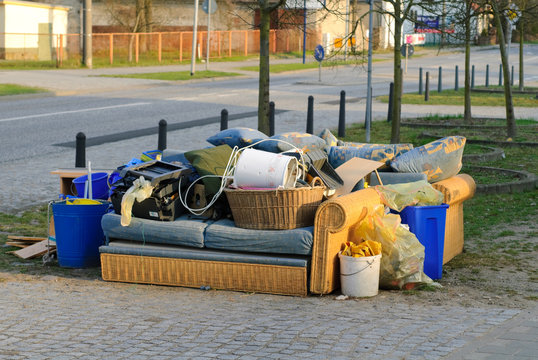Every construction or renovation project produces debris—wood scraps, drywall, metal, concrete, old fixtures, packaging materials, and more. If not managed properly, this debris can quickly create safety hazards, delay progress, and make the site unprofessional. That’s why construction debris removal is such a critical part of project management.
This guide covers the best practices for removing, recycling, and disposing of debris safely and efficiently, while also highlighting how junk hauling services and eco-friendly waste disposal play a role in keeping job sites clean.
Why Construction Debris Removal Matters
Debris isn’t just a nuisance—it impacts multiple aspects of a project:
- Safety – Piles of scrap materials can cause accidents, trips, or equipment damage.
- Efficiency – Workers can’t perform their jobs effectively in cluttered spaces.
- Compliance – Many cities have waste management regulations for construction sites.
- Reputation – A clean site demonstrates professionalism to clients and inspectors.
Ignoring debris management can slow projects down and even result in fines.
Types of Construction Debris
Understanding the kinds of waste generated helps determine the right removal method:
- Wood and Lumber – Broken boards, pallets, and scrap wood.
- Drywall and Plaster – Leftovers from walls and ceilings.
- Concrete and Asphalt – Heavy and bulky, often recyclable.
- Metal – Pipes, wiring, and structural elements.
- Roofing Materials – Shingles, tiles, and tar.
- Packaging Waste – Cardboard, plastic, and Styrofoam.
- Hazardous Materials – Paint, solvents, adhesives, asbestos (special handling required).
Each material may require a different disposal method, especially when recycling is possible.
Best Practices for Construction Debris Removal
1. Have a Debris Management Plan
Before the project begins, outline how waste will be handled. Decide on collection points, removal schedules, and recycling procedures.
2. Use On-Site Containers
Place dumpsters or bins in strategic areas of the job site. Clearly label containers for wood, metal, concrete, and general trash. This makes it easier for workers to separate waste as they go.
3. Schedule Regular Pickups
Waiting until the end of a project to remove debris creates dangerous conditions. Instead, arrange weekly or bi-weekly pickups from junk hauling services to keep the site safe and efficient.
4. Recycle Whenever Possible
Many construction materials can be recycled:
- Concrete and asphalt can be crushed and reused.
- Scrap metal can be melted and repurposed.
- Wood can be chipped for mulch or biomass fuel.
Choosing eco-friendly waste disposal reduces environmental impact and may lower costs.
5. Train Workers on Waste Protocols
A plan only works if everyone follows it. Train the crew on where to place different types of debris and emphasize safety rules when handling heavy or hazardous materials.
6. Partner With a Professional Removal Service
Construction projects produce large volumes of waste that require specialized handling. Hiring professionals ensures compliance, efficient removal, and responsible recycling.
Safety Precautions During Debris Removal
Handling debris carelessly can lead to injuries. Follow these safety tips:
- Always wear protective gear (gloves, hard hats, steel-toe boots).
- Use proper lifting techniques for heavy items.
- Keep walkways and exits free of obstruction.
- Store sharp objects like nails, glass, and metal separately.
Eco-Friendly Construction Debris Solutions
Sustainability in construction isn’t just a trend—it’s becoming an expectation. By working with companies that specialize in eco-friendly waste disposal, you ensure:
- Fewer materials end up in landfills.
- Usable resources like wood, metal, and concrete are repurposed.
- Compliance with green building certifications like LEED.
This not only benefits the environment but can also boost your business’s reputation.
Cost of Construction Debris Removal
Pricing varies depending on:
- Project size and debris volume
- Type of materials (concrete is heavier and costlier to haul than wood)
- Frequency of pickups
Most junk removal companies offer upfront estimates based on truckload size or dumpster rental duration. While costs vary, the investment often saves money in reduced project delays and fewer safety risks.
DIY vs. Professional Debris Removal
Some contractors attempt DIY debris disposal by renting trucks and hauling waste themselves. While this may seem cheaper upfront, it comes with drawbacks:
- Time lost that could be spent on construction work
- Additional landfill fees
- Risk of non-compliance with disposal regulations
Hiring professionals is usually the more efficient and cost-effective choice, especially for large or ongoing projects.
Conclusion
Debris removal is a vital part of any construction project, keeping the site safe, efficient, and compliant. By following best practices—planning ahead, separating materials, recycling, and using professional junk hauling services—you can streamline the process and maintain a clean, organized workspace. Choosing eco-friendly waste disposal ensures that your project contributes positively to both your clients and the environment.
FAQs
1. What types of construction debris can be recycled?
Concrete, asphalt, wood, and metal are the most commonly recycled materials.
2. How often should debris be removed from a construction site?
Ideally, weekly pickups keep the site clean and safe, but frequency depends on project size.
3. Can junk hauling companies handle hazardous construction waste?
Some do, but hazardous materials like asbestos or chemicals often require specialized disposal services.





